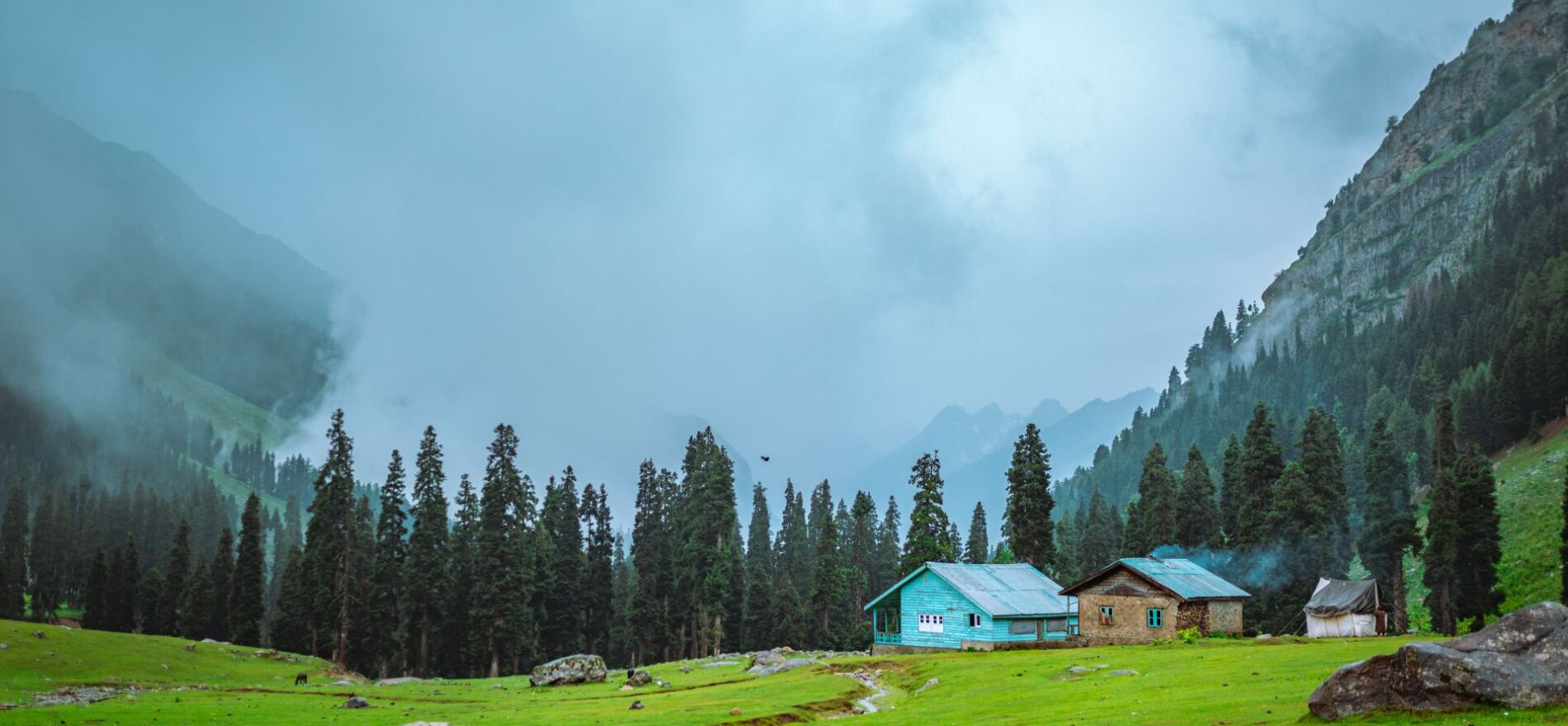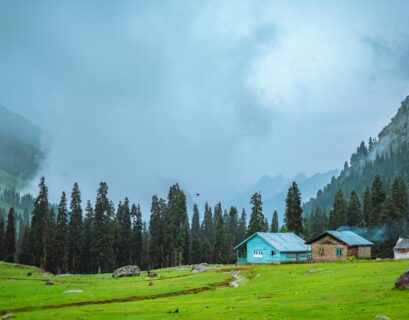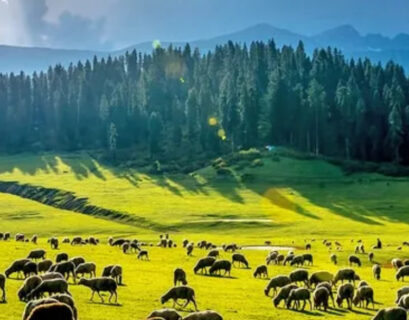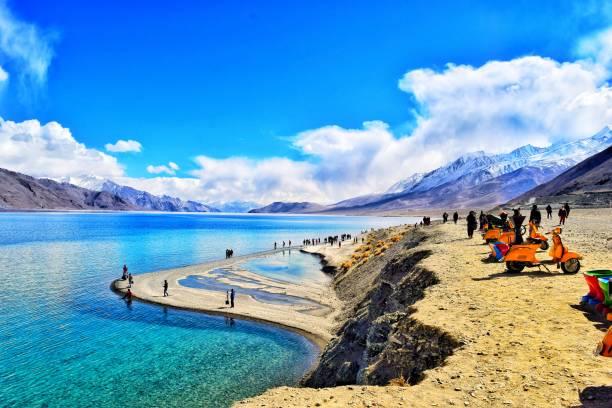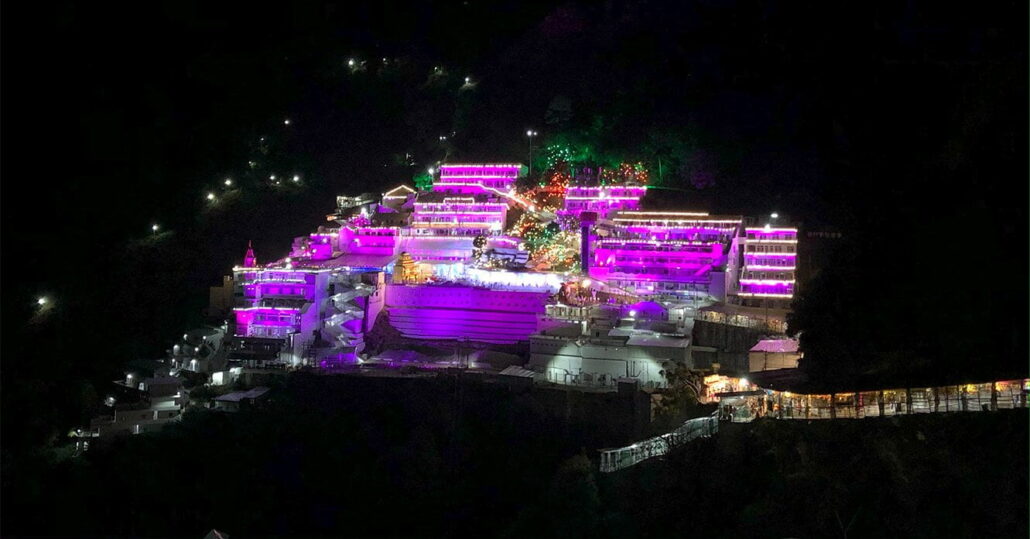Daksum Valley is a natural scenic spot located in the Larnoo tehsil of Anantnag district, Jammu and Kashmir, at Anantnag-Semthan-Kishtwar road.
Daksum Valley is located towards the east of Indian-administrated Jammu and Kashmir, and it’s indeed one of the off-beat destinations and highly picturesque. It is situated in the Anantnag district of the Kashmir Valley and owns beautiful and peaceful surroundings. Daksum is located at approximately 2,300 meters or 7,500 feet sea level and is said by many to be a gem for nature lovers, trekkerers, and those who simply want to get away from the hassle of living in a city.
Geography and Landscapes
Daksum is located between snow-white Pir Panjal ranges and lush green meadows. This place is a treat for adventure enthusiasts as well as any photographer. The valley is traversed by the Daksum stream whose crystal clear waters flow through dense forests of coniferous trees like pine and deodar.
Flora and Fauna
The valley boasts a flora and fauna in the most vibrant variety, characteristic of a temperate climate. The forests are quite rich in biodiversity with all varieties of plants, flowers, and trees. Wild life found in the area includes the Himalayan black bear, leopard, and many other birds, making it a spot of interest for wildlife enthusiasts .
Accessibility and Tourism
This place Daksum is not much in craze of the crowd visiting various attractive tourist destinations in Kashmir, but gradually, it has come into limelight amongst people in the view of its untouched beauty. The nearest town to Daksum is Anantnag, which is 40 kilometers. From Anantnag, one can reach Daksum via road, though the journey involves winding mountain roads.
Best Time to Visit
The best time to visit Daksum is when the weather is warm, may to September. These months fall during the peak summer season, and the valley comes alive with a riot of colors. For that matter, December to February, heavy snowfall continues to hit the region, which could render the valley a beautiful winter wonderland but increases the difficulty in traveling.
Important Points to Know
Daksum is located in Anantnag, one of the regions of Jammu and Kashmir in North India. For those headed towards Daksum, the most appropriate port of entry is by air through Srinagar airport which is approximately 85 km from the city center. This is normally succeeded by either picking a vehicle or taking a taxi for a ride to Daksum. Alternatively, there is a bus from Srinagar to Anantnag that you could take and after that it is possible to get a taxi to Daksum from Anantnag. This place can also be reached by road and so during the journey, a lots of sights of the mountains and the valleys can also be enjoyed.
The climatic conditions of Daksum Valley differ greatly because of its altitude and geographical location. In the summer months, which are from May to August, the average temperatures are between 15 degrees Celsius to 25 degrees Celsius, thus making the weather quite fine and moderate. During winter, December to February, the cold may be merciless with temperatures going below zero degrees Celsius, especially in the evenings with daily interactive highs most of the time between 0-5 degrees Celsius. Indoor Weather Conditions During Spring Season March to April spring temperature is between 8 degrees Celsius to 18 degrees Celsius which is slightly warm as the season brings heady hints of budding nature. Fall or Autumn lasts from September to November and daytime temperatures hover around 10 degree Celsius up to 15 degree Celsius. However, the nights are relatively colder.
Daksum Valley has a history of pleasant weather with four distinct seasons. Summers are gentle and pleasant with bright sunshine and cool breezes. This however translates to long cold winters with sometimes unyielding heavy snowfall additional to the magical transformation of the whole valley into an ice world. For the rest of the travelers, usually within the hilly regions, the monsoons, which occur from June to September also bring occasional rains, which can be rainfall-savoring, but disruptive towards any sort of movement. Inter-sessional seasons of autumn and spring are characterized by comfortable temperatures where cool winds blow and light showers of rain wet the ground in preparation for colorful leaves in year’s last period or flowers scattering all over in spring. This mountainous region is also characterized by unpredictable changes of weather hence being ready for any climate variations especially when upcountry should be the norm.
LOCATION OF DAKSUM VALLEY
Daksum Valley is a sub-divisional region, which comes under the district of Anantnag, an Indian state, Jammu and Kashmir. The valley lies within the Pir Panjal mountain ranges on the southern side of the valley of Kashmir. The town of Anantnag is nearly 40 km southeast from Daksum Valley that proves out to be its nearest locality.
Geographic Coordinates
Latitude: 33.6674° N
Longitude: 75.3346° E
Daksum can be approached through the Anantnag-Pahalgam road and is located within the higher reaches of the Kashmir Valley. Dotted with sumptuous snow-covered mountains and denser forests, it remains one of those places that offer a quieter and peaceful atmosphere more so than a few pop the tourist spots in Kashmir, Srinagar and Gulmarg.
Accessibility and Connectivity
The nearest airport to Daksum is Srinagar International Airport, 85 km away from there. However, the nearest railway station to it is Anantnag. Local transport and taxis could be availed from Anantnag to reach the spot, though the road journey would take about 2–3 hours since it is a mountainous region.
HOW TO ACCESS DAKSUM VALLEY
Daksum Valley is not as commercially advanced as most of the popular tourist hotspots in the region; hence, it is a bit inconveniently accessible—but that's what makes it so charming and serene. The valley can be accessed via road from the nearby towns and cities and is weather and terrain-dependent. Check out below how to get to Daksum Valley:
1. Through Air
Nearest Airport: Srinagar International Airport (SXR)
Nearest airport is Srinagar International Airport, SXR. It is about 85 kms from Daksum. It is the primary entry point into the Kashmir valley and is connected with major Indian cities like Delhi and Mumbai besides Jammu through domestic flights apart from some scheduled international ones.
Road distance from Srinagar Airport to Daksum: Around 85 kms
Road journey time: About 2.5 to 3 hours, depending upon traffic and weather conditions.
Once you reach Srinagar, you can get a taxi or even hire a car, and it takes you through Anantnag to reach Daksum. The access road will take you through Anantnag that is about 40 km far from Daksum and it will then take a scenic drive towards the valley.
2. Through Trains
Nearest Railway Station: Anantnag Railway Station which is about 40 km from Daksum
Daksum - Anantnag Railway Station: 40 km.
Travel Time: About 1.5 to 2 hours
The Railway Station at Anantnag is also well connected to Jammu, Delhi, and other cities of India, but journeys from other big cities (such as Srinagar) need to be changed at various stages. Daksum can be approached from Anantnag by taxi or private vehicle.
3. By Road
Daksum Valley can be approached by road from Anantnag and Srinagar and other locations in the region. The valley lies approximately 40km southeast of Anantnag. The road between Anantnag and Daksum generally is somewhat hilly one, but offering tremendous views of mountains, forests, and rivers directly in the locale.
Route to Daksum This road leaves from Anantnag, which comes up along with the valley, and the road is in decent shape but may be narrow, winding, and at times bumpy.
Local Transport: Taxi services or car rentals are available for this trip; if one's budget is low then use local buses that ply between Anantnag and other cities that will still not reach up to Daksum.
Road Conditions: During the autumn and winter seasons, there is a period between December to February where the snowfalls and frozen temperature pose challenges to the use of the road, and some may be temporarily closed.
4. Seasonal Considerations
Best time to visit: The summer months of May to September would be the best time for visiting Daksum Valley. The weather is pleasant then and the roads easily accessible. The valley surrounded by lush greenery and colourful wildflowers makes a wonderful place for nature walks and trekking expeditions.
Winter: Winter falls between December and February, and Daksum gets heavy snowfall. The valley looks like a wonderland. Again, however, the heavy falls can make the roads quite treacherous. In case you are planning for a trip during this time, ensure you watch out for the weather conditions and have preparations for a winter event with possible warmer dresses and potential traveling delays.
5. Accessibility within the Local Region
The local transport at Daksum is not too easy but some little shops, local guesthouses, and dhabas are available from where the basic requirements can be met. Most of the travelers hire a vehicle or travel through the valley on foot as Daksum is not much more extensive and quite.
FOOD IN DAKSUM VALLEY
Food in Daksum Valley This valley presents a perfect opportunity to enjoy pure, authentic Kashmiri food in a silent quiet surroundings. Though it may not be as aggressively commercially promoted as other parts of Kashmir, local food joints, guest houses, and dhabas offer authentic Kashmiri food. The food here is rather less richly prepared but rich in flavors and local flavors, rich in cholesterol content.
Pure Kashmiri Cuisine
Slow-cooked spices and herbs characterize Kashmiri food. While huge restaurants may be scarce in Daksum, you may enjoy good amounts of fresh food that speaks of the best flavors of Kashmir. Among popular items that you could enjoy when you are at Daksum are:
1. Wazwan, or the Traditional Kashmiri Feast
Wazwan is the Kashmiri version of the multi-course meal from the Royal Kitchens. Traditional it encompasses several non-vegetarian dishes, meat mainly of lamb and mutton, and rice with delicious gravies.
Rogan Josh : This is one of the specialty dishes of Kashmir. Soft pieces of mutton in rich flavorsome gravy spices with cardamom, cinnamon, and Kashmiri red chilies.
Yakhni: One of the mutton or chicken curries prepared using a large amount of herbs, saffron, and spices mixed with yogurt.
Kehwa: Kashmir's traditional green tea spiced with cinnamon, cardamom, and saffron. It is consumed along with almonds and walnuts. That would be a good drink to hot up during the weather in Daksum.
**2. Kashmiri Saag (Kaleji)
Kashmiri Saag: A vegetarian stuff made from mustard greens or spinach flavored, it can be stuffed with soft paneer or mutton.
Dum Aloor: Hues of potatoes which are slow-cooked in a flavored gravy and stewed so all the flavors are absorbed.
**3. Sheer Chai (Pink Tea)**
It comprises green tea leaves, milk, salt, and an addition of a pinch of baking soda that gives it a strange color associated with pink. It's commonly known as Noon Chai or Kashmiri Pink Tea. It is served typically with other local baked goods like lavasa, or kulcha.
4. Nadru Monje-Lotus Stem Fritters
Nadru Monje Fried snack, lotus stem goes hand in hand with spiced batter that's usually served crunchy as a side dish or snack. It's an extremely popular dish since it is used very often in the form of a side dish or a snack in the cuisine of Kashmir.
**5. Gushtaba
Another royal dish is Gushtaba-a mutton meat ball cooked in a rich gravy made of yogurt and ground spices. This often forms part of a traditional Wazwan meal, and it must be tried by all the meat enthusiasts.
**6. Kashmiri Dum Pulao
Dum Pulao is one of the tastiest rice preparation made with fragrant spices. It is always served accompanied by lamb or chicken or vegetables. The cooking is slow and sealed within a pot called dum to retain the flavor .
**7. Rista
Meatballs in Rista are similar to Gushtaba. Meatballs are cooked in spicy gravy with red chili and other spices used for Kashmiri preps. Usually served with rice.
**8. Bread and Local Delicacies
Lavasa: It is a traditional flatbread like what they use in Kashmir but is to scoop up stews and gravies or served along with curries.
Kashmiri Kulcha: Soft bread full of leavening. Often filled with nuts or seeds and baked in the tandoor oven.
Tchotch (or Tchot): It was a traditional flaky pastry, which is only eaten with breakfast or with tea.
**9. Fresh Fish (Rivers and Lakes)
You will find you need fresh water fish like Trout. As it is common here, it is only a pleasure being richly watered by rivers and streams. Fish in mustard oil or spiced gravy is an specialty here.
Daksum food
While big hotels or fine dining restaurants are a non-entity at Daksum, one finds these traditional dishes in the local eateries, that are small dharmashalas, guesthouses, or local roadside stalls. What to look forward to, in terms of availability of food:
Local Dhabas: They serve very simple and less spicy fare like dal, roti, pulao, and vegetable curries. In the evenings, one could get hot kebabs or tandoori rotis.
Guest Houses and Homestays: Houses normally provide meals which are home-cooked. These may be all the traditional preparation of Kashmir and they tend to use fresh produces sourced locally. Expect all kinds of warm rogan josh, rice, comfort stews, and fresh breads.
Vegetarian Dishes
For vegetarian guests, Daksum has a lot in store for you too:
Kashmiri Dum Aloo
Kashmiri Saag (spinach)
Chana or Dal
Mixed Vegetable Curries prepared from the freshest local products in season
Beverages
In addition to the traditional Kashmiri tea (Sheer Chai), there should be local beverages such as saffron milk or fresh fruit juices, which would especially be prepared out of locally grown apples and pomegranates.
RICHNESS IN NATURAL BEAUTY AND DIVERSITY IN DAKSUM VALLEY
Daksum Valley is one of the treasures in the Kashmir Valley, which is still virgin and diversified natural beauty. The valley is based in the state of Jammu and Kashmir's Anantnag district. It is one of the finest examples of the biodiversity richness, thick forests, and scintillating mountain views of the region. Let us now move ahead in detail as to how Daksum Valley abounds with such richness in natural beauty and diversity.
1. Lush Green Forests and Grasslands
All over are vast stretches of coniferous forests pine, deodar and fir trees. Daksum is flanked with vast forests in all directions and thus constitutes a serene environment. Such extensive forests are not only aesthetically beautiful but constitute highly critical ecosystems, capable of sustaining rich plant as well as animal life.
Wildflower meadows: This valley is aptly colored by fantastic color-rich wildflowers June to September. This landscape spread out with such gorgeous colorful flowers like bluebells, poppies, daisies and wild orchids which is only heaven for photographers, nature lovers, and trekking enthusiasts who want to be in such heaven.
Greenery with Glen: Alpine meadows with a combination with lush greenery running along with running streams add an ambiance to the peaceful abode of the valley, depicting it as an escape from a well-booming city chaos.
2. Scenic Mountain Landscapes with White-Topped Summit Daksum is a place located in the Pir Panjal range of mountains. White capped summits dot the horizon; the beauty which these pose is beyond words. In winters, even the valleys and mountains are blanket covered with thick snow and thus present a kind of winter wonderland.
Daksum is, therefore, a haven not just for the nature lover but also for the adventure-seeker with its towering mountains yielding to crystal-clear streams and glacial rivers. The distant valley Alpine peaks add to the distinct dramatic landscape of the valley.
3. Daksum Stream and Waterfalls
The valley is complemented by the beauty of Daksum stream, and adding crystal clear waters made it an ideal spot for fishers or a venue for quiet recreation in the peaceful atmosphere of the surrounding landscape.
There are also numerous small waterfalls and along Daksum, water falls from the cliffs, thus scenes of nature are very scenic. Soft falls add up to soothing environment and make the place apt for meditation and relaxation.
4. Diversity of Flora and Fauna
Daksum abounds in a number of flora and fauna species because of its temperate climate and the variety of ecosystems it has.
Flora
Rich flora with species of wild flowers, herbs, mosses, and fungi abound the valley. Forests are basically coniferous- pine, cedar (deodar), fir, and spruce.
Alpine meadows with lush grasses and shrubs abound.
Large tracts of fruit-bearing trees like apple orchards, pomegranate, and cherry exist in the valley. These plus apricots and apples have become staple money earner for the local economy.
Fauna
Daksum valley is pretty rich in fauna, as it has the Himalayan black bear, leopard, wild boar, and even a snow leopard. Though not often spotted, they exist.
Other mammals are Musk deer and the Kashmiri stag (Hangul) although rare. They mostly are found along the boundaries of the forest with its reclusive population only appearance at extremely early mornings or late evenings.
Birdlife is also very wide, including eagles, pheasants, kestrels, partridges, and woodpeckers, among others. It is also a destination for bird lovers who wish to see these beautiful creatures in their habitat.
5. Mixed Weathers and Seasons
April to September. Spring and Summer. It is about 15 to 25 degrees. The valley is a beautiful place for trekkers, nature photographers and the seekers of a retreat. The meadows are covered by wildflowers; cool, fresh air all around it.
Autumn (October to November): This is the fall season when October and November give trees an attractive golden feel. In reality, yellow or orange shades that the leaves of trees eventually become before falling provide a beautiful setting for nature. It is ideal weather to indulge in adventure activities such as trekking or camping or fishing outside.
Winter December to February: Daksum Valley whitens up with the snowfall. During this period, the valley transforms into a white paradise. The day shortens, and the temperature is low but many travelers prefer winter for visiting Daksum Valley as a time out for either trekking in winter or space gazing into the area of snowy surroundings or engaging into some sport involving snow.
6. Adventure Opportunities and Trekking
Daksum is proposed for adventure activities like trekking and camping. Several treks start from the valley, the most prominent of which is the Daksum to Kolohoi Glacier Trek, several others touching down to the higher reaches of the Pir Panjal range.
Daksum is a great place for camping. The trekkers camp either along the stream or in meadows. The place is pristine and one experiences nature in its most unspoiled form.
7. Scenic Beauty and Photography
The valley is the place best suited for any photographer. Scenarios of the landscape are totally changing from green canopies in summer to snow below the peaks during winter and make it the place ideal for photographers be it amateur or professional.
Vibrant color of wildflowers, reflections of the surrounding mountains in crystal-clear waters of Daksum stream, and towering pine trees create tapestry to behold breathtaking natural beauty.
LOCAL CULTURE AND TRADITIONS IN DAKSUM VALLEY
The local culture and traditions are highly deeply rooted in Daksum Valley, having been entrenched into the very rich heritage of the Kashmir region-a supposed unique combination of Islamic, Hindu, and Buddhist influences combined with the ancient practices, customs, and way of life. Even though it is nestled in remotes isolation and peace, a lot of the cultural fabric has been very much similar to that of the entire Anantnag district and wider Kashmir Valley. Daksum Valley: A Glimpse into the Local Culture and Traditions.
a. Religion and Spirituality
Religious: Virtually the entire Kashmir and Daksum Valley is pretty Muslim. Here, Islam has penetrated almost every spectrum of life. There are many mosques and shrines here, and religious activities such as namaz (prayers), Ramadan fasting, and Eid celebrations occupy a very crucial place in their lives.
Historical Perspective of Kashmir and Sufism with Shrines: The state has a long history of Sufism and Daksum is no exception to this. The region houses a number of shrines of Sufi saints; many of them, with time, have transformed into centers of religious activities for the locals as well as the tourists. Ziarats or the graves of Sufi saints are considered the foremost places of pilgrimage, both to get blessings and to pursue some of the religious activities.
Besides that, local fairs and cultural festivals are also much observed by the community in which they celebrate. An example is Shab-e-Barat, or the Night of Forgiveness. On this day, people gather at mosques for prayer and festivities.
Hindu Heritage: Even though Daksum is a Muslim place of religious worship, the heritage as a whole in Kashmir Valley is very steeped in Hinduism. Of the towns around it, Pahalgam and Anantnag have Hindu temples and rituals still going on. Amarnath Yatra brings thousands of pilgrims many of whom pass through this place. It is a major pilgrimage for devotees to the cave shrine of Lord Shiva.
2. Traditional Kashmiri Arts and Crafts
The valley is very developed in the tradition of craftsmanship, and the people of Daksum Valley are certainly not an exception in trying to keep all these artisanal practices alive.
Pashmina and Woolen Products: The woolen products are from Kashmir, particularly the Pashmina shawls that have been designed all over the world with their soft texture. But these costly fabrics are handmade by the brilliant artists of this place. Although Daksum is a small village, the big cities are Anantnag and Srinagar which have manufacturers for woolen products.
Kashmiri Carpets and Rugs: In addition to the shawls, Kashmiri carpets are another product which this valley is famous for. The wool or silk-based carpets that take their shapes through hand-knotted traditional techniques passed over generations are very masterly crafted.
Paper Mâché: The elaborately done paper mâché is something unique in the art of Kashmir. Local artisans here make colourful boxes, bowls, etc. Decorative items, are done through this ancient technique. Though more predominant in urban areas, this craft is also followed in the rural areas of Kashmir.
3. Traditional Dressing
Traditionally, the clothing of people in Daksum Valley represents the weather condition and culture prevailing in the region.
Kashmiri Local Men's Dress In winter, in Kashmir, where he normally spent winters, he mainly wore a pheran, which is loosely comfortable woolen cloak. Wool is broadly used and very warm; in the winter they become coarse. He wore kufi caps or Pashmina shawls and on special occasions, Chogas, kinds of Kashmiri embroidered waistcoats.
Women of Daksum mainly wear a pheran, which covers almost all parts of their body, an all-time woolen gown. Salwar kameez is also one of the traditional woman wears of Kashmir and it encompasses a tunic worn along with loose pants. Head scarfs or Dupattas are normally intricately embroidered with women, and their attires are made of fine wool or cotton as the season demands.
Jewellery: Both have the traditional Kashmiri ornaments ranging from gold and silver ornaments to earrings, necklaces and bracelets. Of course, among women, Kashmiris take most of the pride in the beauty of their Guluband (a sort of necklace) and Jhumkas (earrings).
4. Music and Dance
While music and dance are highly traditional aspects of culture in Daksum, the nature of the performance itself would be comparatively informal and community-based compared with the city-based understandings of such performances.
Folk music. The classical Sufi and folk elements can easily be seen in the Kashmiri music. Folk music contains a lot of Santoor, Rabab, Tabla, and Dhol. These are used for performance purposes. Folksy songs which have historical backgrounds common in the valley and their people and nature form a part of social functions and festivals.
Dance: Though traditional dance forms, such as Rauf are hardly witnessed in the celebrated festivals of Kashmir, Daksum people never forget to celebrate occasions like weddings, festivals, and other religious events with group dancing. The Rauf is a majestic dance and is gracefully performed at all colors of attires even in the rural sites too.
5. Cuisine and Hospitality
Food and traditions are a part of the culture in Kashmir but Daksum has never had its own. Traditionally, Kashmiri food is famous for rich flavored dishes that consist of mutton, rice, and spices.
There are the most celebrated traditional dishes that characterize this region-Rogan Josh, Yakhni, Kashmiri Pulao, and Sheer Chai. Local cuisine also encompasses Nadru Monje-fried lotus stem fritters-and Kehwa-spiced green tea-the other way around. Wazwan is this Kashmiri's traditional feast and is a must element during big occasions and weddings.
Hospitality: The people are so warm and hospitality, and this feature was also noticed in the villages also such as Daksum. In villages, people like providing Kehwa to the guests and also would ensure they can also share in a meal. Festivals have so much food stuff, and family and friends join in to relish their meals.
6. Local Crafts and Festivals
Similar to the rest of Kashmir and the valley, Daksum observes the festival of Navroz, which is Kashmiri New Year, and Baisakhi, which is known as the harvest festival. It celebrates this festival through traditional food, folk dances, and prayers for prosperity.
Local Fairs and Pilgrimages: The religious practices of the valley lend its pilgrimages to the Sufi shrines and local fairs on special occasions. Most of the fairs and pilgrimages are inclusive of the following local crafts, food and cultural performances.
MAJOR ATTRACTIONS IN DAKSUM VALLEY
Daksum Valley is one of the very beautiful places in the Anantnag district of Jammu and Kashmir, India. This valley is famous because of its natural beauty and has many major attractions for those who love nature and also for adventure enthusiasts, besides those seeking relief from the pollution and chaos of city life. Major attractions in Daksum Valley include:
1. Daksum Village
Overview: Daksum is a small village, wherein a beautiful valley falls densely covered with forests, green meadows, and snow-capped mountains. It is one of the best places for nature lovers for long walks in a peaceful environment.
Things to do: You may take a walk around the village or in the meadow or get into the nearby forest areas.
2. Daksum Waterfall
Overview: Daksum Waterfall is a really good natural cascade near a village. The waterfall has a lush green area and represents a quite scenic quiet location.
Activities: Scenic photography, picnics and nature walk.
3. Khanbal
Overview: Khanbal is an important town of Anantnag district down at the bottom of Daksum Valley. The town shows glimpses of a typical, rustic Kashmiri life; famously famous for his agricultural land.
Activities: One can go there for shopping locally, taste the traditional Kashmiri food or have a visual feast of the rivers and fields along.
4. Arhama Village
Description: It is situated near Daksum, beautifully placed in the serene environment with traditionally built wooden houses of Kashmir.
Activities: Better suited for peaceful walk and to feel the rural aura of this place.
5. Sinthan Top
Overview: It is a pass near Daksum that gives great views of mountains, valleys, and meadows around. Perhaps a hidden-gem type destination in Jammu and Kashmir. Activities: One can trek and camp on Sinthan Top. For skiers and snowboarders, it will turn into a winter wonderland during winters.
Overview: Sinthan Top is a place people like to call virgin beauty near the Sinthan Valley. It's the place, where one can spot scattered alpine meadows, crystal-clear streams, and heavy forests.
Activities: Adventures explore the place to plan trekking and nature walks. It's an untouched beauty forming an excellent place for camping and photography as well.
7. Baisaran Valley
Overview: Daksum is not very stylish in Pahalgam, yet a reasonable bet for entry into the Baisaran Valley and its meadow stretches and views over snow-covered peaks.
Activities: It is here where the prime activities are trekking, horse riding, and picnics.
8. Adventure Sports
Trekking: Daksum Valley has some trekking trails, which is suitable for both beginners and time-experienced trekkers due to the undisturbed landscape and density of forests, which it presents as an exciting destination for a trekking adventure.
Camping: There are various places around Daksum that can be used to create camps and later spend this peaceful atmosphere.
Fishing: There is good alpine trout fish in the rivers and streams. The Lidder River, Daksum, is crystal clear with some beautiful scenery. The spot is quite perfect for nature lovers or fishing hobbies. Camping, photography, and having picnics by the riverside can be performed here. 10. Wildlife and Flora
General: The valley is full of flora and fauna and a gigantic number of species surround the forests around. Among the coniferous trees, pine and deodar provide major forest cover. The species of musk deer, leopards and several birds inhabit here.
Activities: Bird watching, nature photography and wildlife exploration are good for nature lovers.
11. Sheen Forests
Overview: Daksum is a virgin Sheen forest with tall pine, fir, and deodar trees. The forest is spectacular and peaceful.
Activities : Walk in and around the dense forested areas; nature walks. It is one of the best photography sites.
Tips for visiting:
Best season to visit Daksum valley: Round the year. Open-air activities are enjoyed in the pleasant weather in these months. Winter is November through February with scope for all the snow sports as though climate turns dramatically cold.
Accessibility: Daksum is 80 km from Srinagar, but the road conditions vary on a day to day basis depending upon the weather conditions, more particularly at winters. It would be a great idea to cross-check the weather and road conditions before you are planning your visit.
On the whole, Daksum valley is an irresistible mix of natural beauty, adventure, and serenity and an apt destination for both nature as well as adventure lovers.
THINGS TO DO IN DAKSUM VALLEY
Daksum Valley is the perfect place situated in the peaceful region of Anantnag, Jammu and Kashmir. It offers respite to the nature lovers and adventure seekers from the fast-paced life of cities. Some of the exciting adventure activities one can indulge into while coming to Daksum Valley are:
1. Trekking and Hiking:
Walk on the Trails: Daksum is abuzz with lush green grasslands, dense dark forests and snow-covered mountain tops. Trekking trails incorporate:
Sinthan Top Trek: The most beautiful views of surrounding mountains and valleys can be photographed from here. It just feels good to be in the natural world.
Arhama Village Trek : For a trekker, it is a fun trek - for the casual traveller it is an exciting experience, for the ardent one, it's just fantastic. The difficulty level is easy to moderate and allows scenic exploration of the rustic beauty of Arhama village and its surroundings.
Daksum to Pahalgam Trek: For those who have more adventurous spirits, this is one of the most strenuous treks, tracing some of the breathtakingly beautiful scenic landscapes and virgin rivers alongside; for others, one gets such a beautiful experience of beautiful landscapes and virgin rivers by camping and gazing at the starry skies above.
Daksum or Sinthan Valley. There are many silent meadows, that makes an awesome overnight camps. The meads has majestic mountain and valley ranges. While the nights of Daksum are ideal for stargazing as light pollution is relatively less in this place.
Sinthan Top, just outside the Daksum village, and the beautiful meadows outside Arhama villages can be considered one of the best places for camping.
3. Trout Fish The Lidder River flows through the valley. Crystal clean and pure water flows alongside this water body. Among other activities, in these crystal clean and pure waters, trout fishing is one of the most sought after. You can try your luck in finding some fish in the river in the midst of the natural beauty.
Gears: You can carry your fishing gears with you or rent them from the local shops there. you can rent a gear from the towns around Anantnag .
4. Photography and Nature Walks
It is Scenic Photography: Pristine natural landscapes glisten in the frame of Daksum Valley, an eyeful for photographers. Flowing waterfalls, alpine meadows, snow-covered mountains, and lush forests all make photography unlimited.
Wild Life Photography: Birds, deer, and other wild animals which can be spotted in the forests and meadows will definitely please any photographer visiting Daksum.
Nature Walks: Long treks in the forests, mainly in Sheen forest and along the side of Daksum Waterfall, have always been a silent excursion into nature, through relishing local flora and fauna.
5. Snow Sports at Sinthan Top
Skiing and Snowboarding: Sinthan Top is undoubtedly one of the best places for snow sports during winter seasons, where the snow-covered hilly zones and slopes thus offer tremendous opportunities for skiing and snowboarding.
Snow Hike: You may not be the sportsman who loves snow and all those games, but a simple hike around Sinthan Top in the season of snow is complete magic, and it feels blissful as the feeling of the glow of contrast coming underneath your feet with mountain view.
6. Daksum Waterfall
Picnic near the waterfalls: Daksum Waterfall is a beautiful and quiet place to sit and relax in the bliss of nature. One may spend time at the waterfall, have a picnic or just sit and hear the water cascading by.
Photography: The view of falls and lush green forests with high mountains surrounding is the joy of photographers in early morning light.
7. Explore the Local Villages
Arhama Village: Taste the flavor of local village life in Arhama with the beautiful apple orchards, pastures, and a forest area setting behind it-far from yet close to an authentic expression of the village setup of local agriculture and culture.
Khanbal: Khanbal is a picturesque locality and lies on the foot of Daksum Valley. Here, you get to mingle with the locals; you can shop for your favorite handmade products from Kashmir and get acquainted with its rich cultural heritage.
8. Sinthan Valley
Trekking and Scenic Views: From Sinthan Top, one can trek to the nearby Sinthan Valley which offers views unrivalled anywhere else in the world to either side-thick meadows with wildflowers, and a distance of massive white peaks. One can trek, hike, and photograph in the valley.
Camp: Sinthan valley is also apt for camping with clear sky and scenic surroundings.
9. Adventure Sports and Off-roading
Off-roading: The allure of Daksum Valley, especially the Sinthan Top, offers some truly fantastic off-roading experience. You may try to take an SUV tour to the not-so-touristy and relatively uncharted territories of the place.
Mountain Biking: Compare the meadows and the challenging terrains of Daksum as a mountaineering affair for mountain biking enthusiasts. The mixed terrain in the place gives bikers thrilling challenges .
10. Wildlife watching
Sheen Forests: Except deer, leopards and wild boars, the Sheen forests, Daksum is full of many others that can not be enumerated. The Himalayan griffon and such mountain birds will allure the avid ornithologist.
Musk Deer and Leopards: These forests around Daksum are the habitat of Musk deer and leopards. Very few have the opportunities to see them.
11. Relax and Unwind
Relaxing Escape: Daksum Valley is the perfect destination for any nature lovers searching for a retreat to rediscover and re-establish their relationship with nature. This really would serve the purpose, amidst nature, be it meditation for attaining peace or yoga practice or just unwinding.
Street Food of Kashmir: Savor the local delicacies such as Rogan Josh, Kashmiri Pulao, Gushtaba at any local sweet shop or in homestays
12. Cultural Experience
Explore Local Temples: Through Daksum, local temples and shrines throw up. The entire experience comes alive while visiting the Shankaracharya Temple in the town of Anantnag nearby.
Interact with Locals: The culture of Kashmir is so different and rich. It would give insights into their traditions and lifestyle if one moment were taken to interact with locals.
Location of DAKSUM VALLEY Jammu and Kashmir in Google Maps
People Also ASK about DAKSUM VALLEY
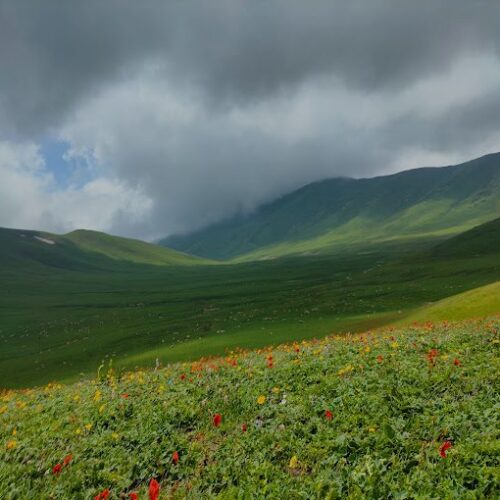
What is Bangus Valley famous for?
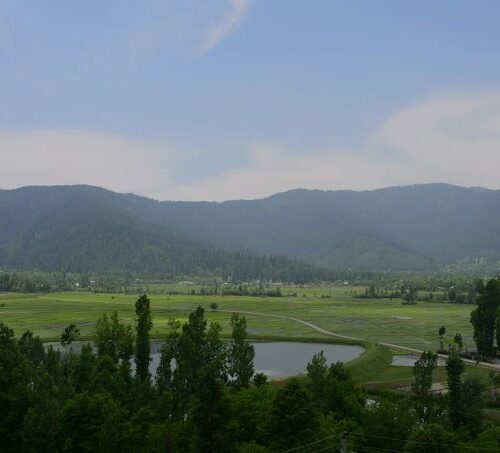
Is there any permission required for Bangus Valley?
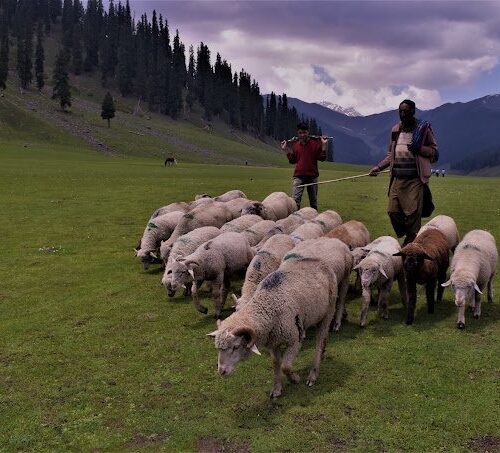
Which district is Bangus Valley in?
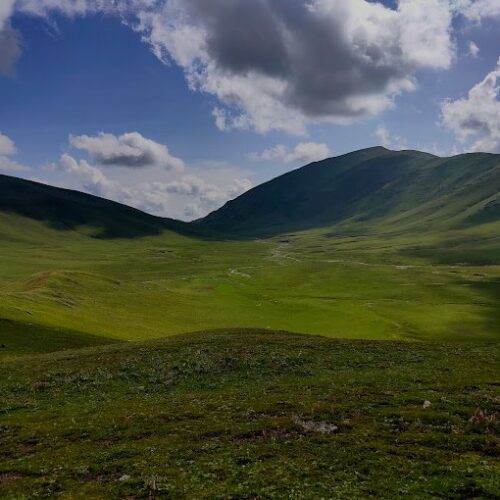
Is there water in Bangus Valley?

Is camping allowed in Bangus Valley?

How to reach Bangus?
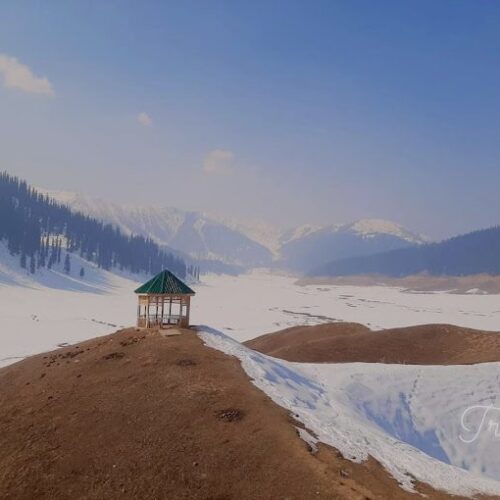
What is the altitude of Bangus Valley?

Is Bangus Valley worth visiting?

Bangus Valley distance from Srinagar?
External Links to More resources related to DAKSUM VALLEY, Jammu and Kashmir
Here are a few resources that can help you learn more about Bangus Valley:
1. Jammu and Kashmir Tourism (Official Website)
-
Website: https://www.jktourism.org
-
Details: This is the official tourism website of Jammu and Kashmir. It provides general information about the valley, including popular tourist spots, travel tips, and more. Bangus Valley is often featured in broader content about Kashmir’s natural beauty.
2. Kashmir Valley Tourism (Unofficial Travel Guide)
-
Website: https://www.kashmirvalley.com
-
Details: This website offers detailed information about the entire Kashmir region, including Bangus Valley. It discusses attractions, trekking routes, and eco-tourism opportunities, which may be helpful for travelers interested in exploring the area.
3. TripAdvisor (Travel Reviews & Insights)
-
Website: https://www.tripadvisor.in
-
Details: Search for Bangus Valley on TripAdvisor for reviews, travel tips, and photos from visitors. This platform provides insights on accommodations, tours, and activities in the region, along with ratings from other travelers.
4. The Kashmir Monitor
-
Website: https://www.thekashmirmonitor.net
-
Details: A regional news website that often covers topics related to tourism, developments, and environmental conservation in Kashmir. Occasional articles may feature stories on Bangus Valley.
5. Kashmir Tourism: Incredible India (Government of India’s Tourism Website)
-
Website: https://www.incredibleindia.org
-
Details: This official site promotes tourism across India, including the Kashmir Valley. It offers details about popular tourist destinations, including offbeat spots like Bangus Valley.
General FAQs
Yes – Daksum Valley is accessible by road, though the roads are narrow and winding. It is around 80 km from Srinagar, and the best time to visit is during the summer months when the roads are clear.
No – Daksum Valley is best visited between May and October. In winter, heavy snowfall can block roads, making access difficult.
Yes – There are basic guesthouses, rest houses, and a few homestays available. However, for luxury stays, you may need to travel back to nearby towns.
Yes – Daksum Valley offers scenic trekking routes like the Daksum to Verinag trek and the trek to the Sheshnag Lake, which attract trekkers and nature lovers.
Yes – Daksum Valley is considered safe for tourists, but visitors should stay updated on local conditions and travel advisories. Always follow the advice of local authorities.
Yes – It’s possible to visit Daksum Valley without a guide if you are familiar with the region, but a guide can enrich your experience and help you navigate better.
No – The road to Daksum Valley is not well-paved, and only high-clearance vehicles or jeeps are ideal for the trip.
No – Mobile network coverage is limited or unavailable in many areas of Daksum Valley. Be prepared for connectivity issues.
No – There are no ATMs in Daksum Valley. It’s advisable to carry cash before traveling to the area.
Yes – The region is rich in wildlife, and you might spot animals like the Himalayan brown bear, musk deer, and various species of birds.
Yes – Daksum Valley offers stunning landscapes, with lush green meadows, flowing rivers, and snow-capped mountains, making it a photographer's paradise.
Yes – Winter brings snow to Daksum Valley, making it an excellent destination for winter activities like snow trekking, skiing, and snowboarding.
No – There are limited food options in Daksum Valley. It’s best to carry your own food supplies or eat at the basic guesthouses or homestays.
No – Monsoon season (June to September) brings heavy rains that can cause landslides, making the roads dangerous and travel unsafe.
Yes – Nearby Verinag is famous for the historic Verinag Spring, and there are several ancient temples and shrines in the region.
Yes – You can experience the local Kashmiri culture, including traditional music, dance, and festivals like Eid and the Tulip Festival in nearby areas.
Yes – Camping is allowed in certain areas of Daksum Valley, and it’s a great way to experience the serene beauty of the place. Make sure to follow environmental guidelines.
Yes – Daksum Valley’s rivers and streams are ideal for fishing, though you may need to obtain a local permit.
Yes – Some of the popular attractions include the Daksum Forest, Sheshnag Lake, and the nearby Verinag Spring.
Yes – Daksum Valley is family-friendly, and children can enjoy nature walks, picnics, and scenic views, though it’s best to be cautious with younger children due to the terrain.
Yes – With its tranquil surroundings, pristine landscapes, and quiet atmosphere, Daksum Valley makes an excellent destination for honeymooners seeking a peaceful getaway.
Yes – Local guides can be hired in nearby towns like Anantnag, offering knowledge of the region’s history, culture, and trekking routes.
No – There are no hospitals or major health facilities in Daksum Valley. Carry essential medicines and know the nearest hospital locations in Anantnag or Srinagar.
Yes – The area is relatively untouched by mass tourism, and efforts are being made to preserve its natural beauty. Visitors are encouraged to follow eco-friendly practices.
No – No special permits are required for domestic tourists to visit Daksum Valley. However, foreign tourists may need to check with local authorities for any travel restrictions.

